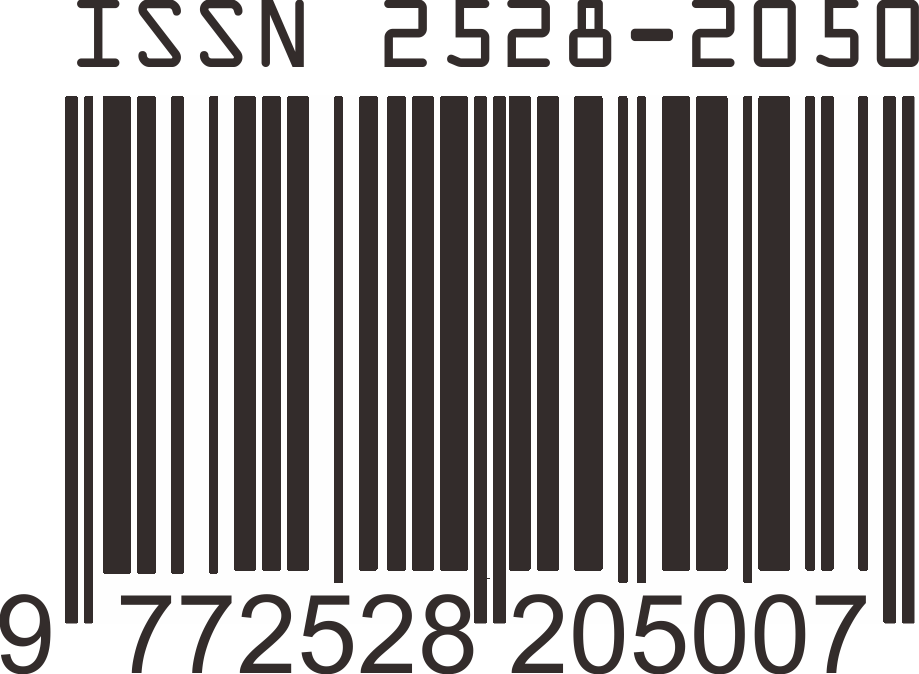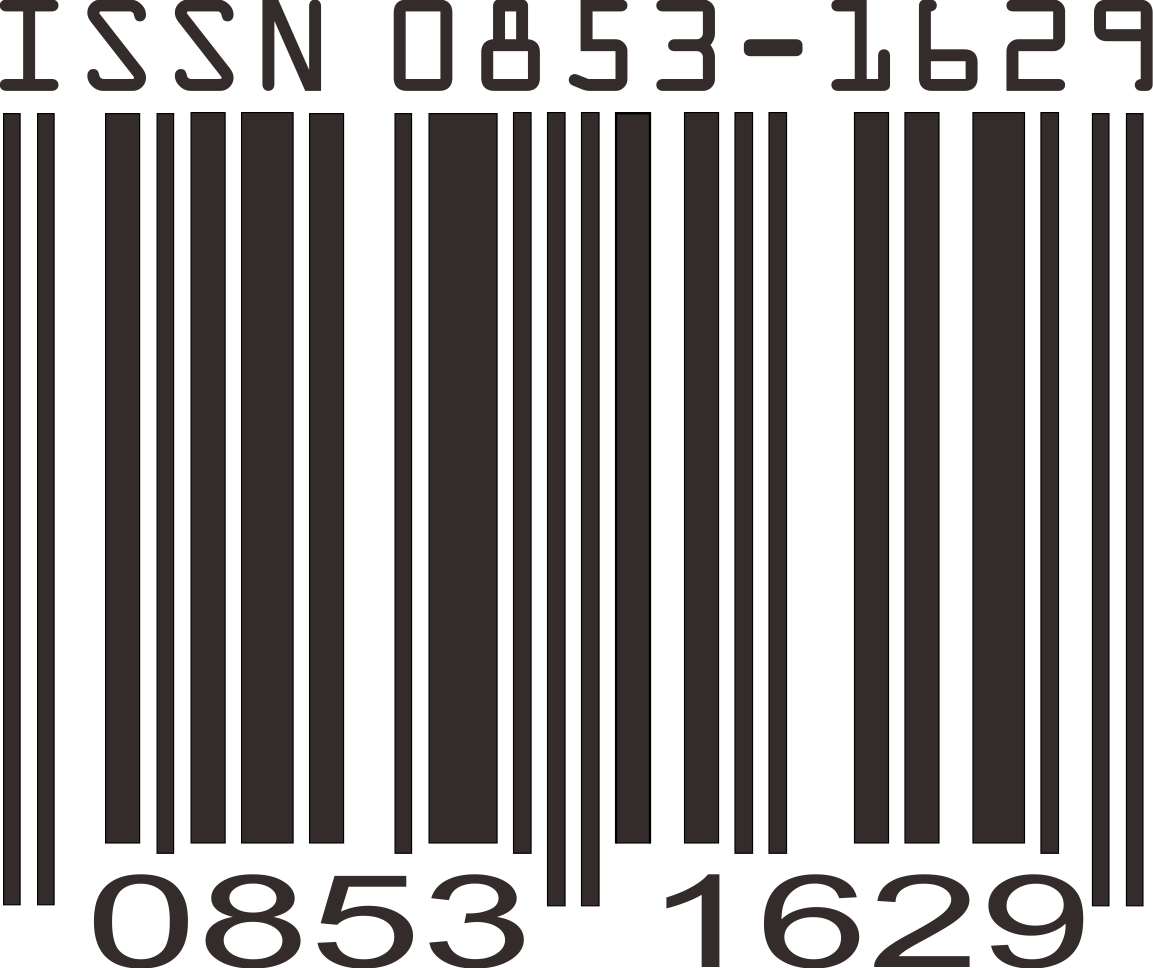Identifikasi Keanekaragaman Polen Tanaman Sumber Pakan Lebah pada Madu Lokal dari 5 Desa di Kabupaten Boyolali
Abstrak
Honey is a natural sugar produced by bees from the nectar of plants or secretions of living parts of plants or excrtions of plant sucking insects on the living parts of plants. Pollen is an important component contained in honey, as a source of protein for bees. The This study aims to determine the diversity of pollen which is a source of bee feed, and knowing the type of honey based on the type and frequency of pollen in honey in 5 villages in Boyolali Regency. The method used for the pollen analysis is acetolysis. The quantitative data of pollen analysis using Excel Software. The results showed the diversity of plant pollen in honey from 5 village in Boyolali is 52 taxa, and the type of honey based on the frequency and types of pollen varies, the village Cerme and Cepogo honey is multifloral honey, Kiringan and Pager Village honey including monofloral honey, and Kemiri Village honey is bifloral honey.
Kata Kunci
Teks Lengkap:
PDFReferensi
Achigan-Dako, E. G., Sogbohossou, O. E. D. & Maundu, P., 2014. Current knowledge on Amaranthus spp.: Research avenues for improved nutritional value and yield in leafy amaranths in sub-Saharan Africa. Euphytica, [e-journal] 197(3), pp 303–317.
Adesina, G.O. dan Babarinde,S. A., 2014. Trees Bees Use Cromolaena odorata (Eupatorium odoratum L). Bees for Development Journal, [online] 2, 7. Available at: http://www.beesfordevelopment.org/media/3090/trees-bees-use-chromolaena-odorata.pdf [Accessed 01 November 2018]
Agussalim, A., Agus, A., Umami, N. & Budisatria, I. G. S., 2017. Variation of Honeybees Forages As Source of Nectar and Pollen Based on Altitude in Yogyakarta. Buletin of Animal Science, [e-journal] 41(4), pp 448-460.
Chauhan, M. S., Farooqui, A. & Trivedi, A., 2017. Plants foraged by bees for honey production in northern India : The diverse flora of India and its implications for apiculture. Acta Paleobotanica, [e-journal] 57(1), pp 119–132.
Erdtman, G., 1986. Pollen Morphology and Plant Taxonomy: Angiosperms (An Introduction to Palynology). Belanda : E. J Brill Leiden. Available through: [Accessed 12 April 2018].
FAO. 2011. Melliferous Plant for Cameroon Highlands and Adamauoa Plateau Honey. Available at: http://www.fao.org/forestry/30290-030a9b2e8b2f81084007140f30e38d230.pdf [Accessed 27 April 2019]
Hesse, M., Halbritter H., Zetter R., Weber, M., Buchner R., Radivo A. F. dan Ulrich S., 2009. Pollen Terminology : An Illustrated Handbook. Austria: Springer Wein New York.
Kifle, T. B., 2015. Screening of Potential Herbaceous Honey Plants for Beekeeping Development. Agriculture, Forestry and Fisheries, [e-journal] 3(5), pp 386.
Louveaux, J., Maurizio, A. dan Vorwohl, G., 1978. Methods of Melissopalynology. Bee World, [e-journal] 51(3), pp 125–138.
Mackenzie, G., 2015. Sporopollenin, The Least Known Yet Toughest Natural Biopolymer. Frontier in Material, [e-journal] 2 (66), pp 1–5.
Malerbo-Souza, D., 2011. The corn pollen as a food source for honeybees. Acta Scientiarum. Agronomy, [e-journal] 33(4), pp701-704.
Nataliani, Y., 2017. Aktivitas Mencari Polen dan Keanekaragaman Polen Lebah Madu Apis Melifera di Boyolali Jawa Tengah. Skripsi. Available at: Website perpustakaan Institur Pertanian Bogor [Accessed 07 April 2018]
Perveen, A. & Qaiser, M., 2001. Pollen Flora of Pakistan-XXVI Balsaminaceae. Turkish Journal of Botany, [e-journal] 25, 35-38. Available at: http://journals.tubitak.gov.tr/botany/abstract.htm?id=4442 [Accessed 24 November 2018]
Rismayanti, Triadiati & Raffiudin, R., 2015. Ecology Service Tumbuhan Herba untuk Lebah Trigona sp. Ecology Service of Herbacious Plants for Trigona’s Bee. Jurnal Sumberdaya HAYATI, [e-journal] 1(1), pp 19-25.
Salonen, A., Ollikka, T., Grönlund, E. & Ruottinen, L., 2017. Pollen analyses of honey from Finland. Grana, [e-journal] 48(4), pp 281-289
SNI., 2004. Badan Standarisasi Nasional No. 01-3545-2004. ICS 67.180.10.
Suranto, A. 2007. Terapi Madu. Jakarta : Penerbit Swadaya.
Suwannapong, G., Eiri, D. M. & Benbow, M. E., 2012. Honeybee Communication and Pollination, IntechOpen, [e-journal] pp 39-62.
Waykar, B. & Baviskar, R. K., 2015. Diversity of bee foraging flora and floral calendar of Paithan taluka of Aurangabad district (Maharashtra), India. Journal of Applied Horticultura, 17(2), pp155-159.
Wingenroth, M., 2001. Honey Types and Pollen Grains of Asunción, Lavalle, Mendoza, Argentina (32o33’21’’S/68o14’45’’W), Vegetal Origin and Possible. Apimondia.Com, [e-journal] (November). Available at : http://www.apimondia.com/congresses/2001/Papers/218.pdf [Accessed 11 Januari 2019]
Yao, Y., Bera, S., Wang, Y. & Li, C. 2006. Nectar and Pollen Sources for Honeybee ( Apis cerana cerana Fabr .) in Qinglan Mangrove Area , Hainan Island , China. Journal of Integrative Plant Biology, 48 (11), pp1266–1273.
Article Reads
Total: 4023 Abstrak: 1301 PDF: 2670Article Metrics
Metrics powered by PLOS ALM
Refbacks
- Saat ini tidak ada refbacks.
Laman ini dikelola oleh:
Bio Publisher
The Faculty of Biology Publishing
Laman ini dikelola oleh:
Penerbitan Fakultas Biologi
Universitas Jenderal Soedirman
Jalan dr. Suparno 63 Grendeng
Purwokerto 53122
Telepon: +62-281-625865
Email: biologi@unsoed.ac.id
Laman ini menggunakan:
OJS | Open Journal System
Software pengelolaan jurnal ilmiah online. Versi yang digunakan adalah 2.4.8.0.
Metadata artikel terdaftar di:
Crossref
Agen resmi internasional pendaftaran Digital Object Identifier (DOI)
Artikel jurnal ini terindeks:









